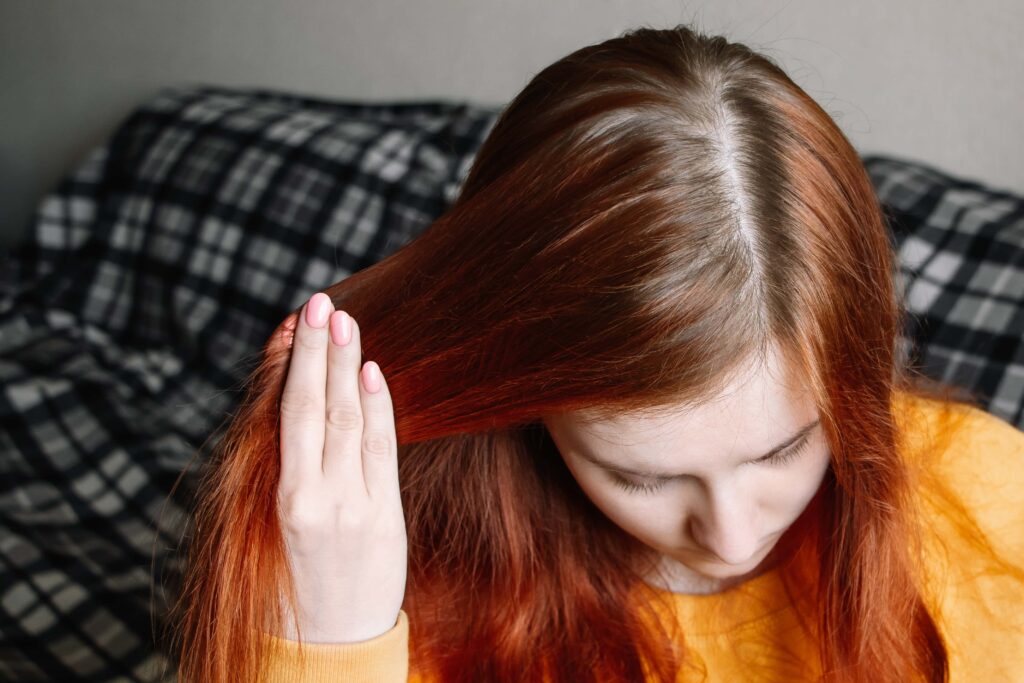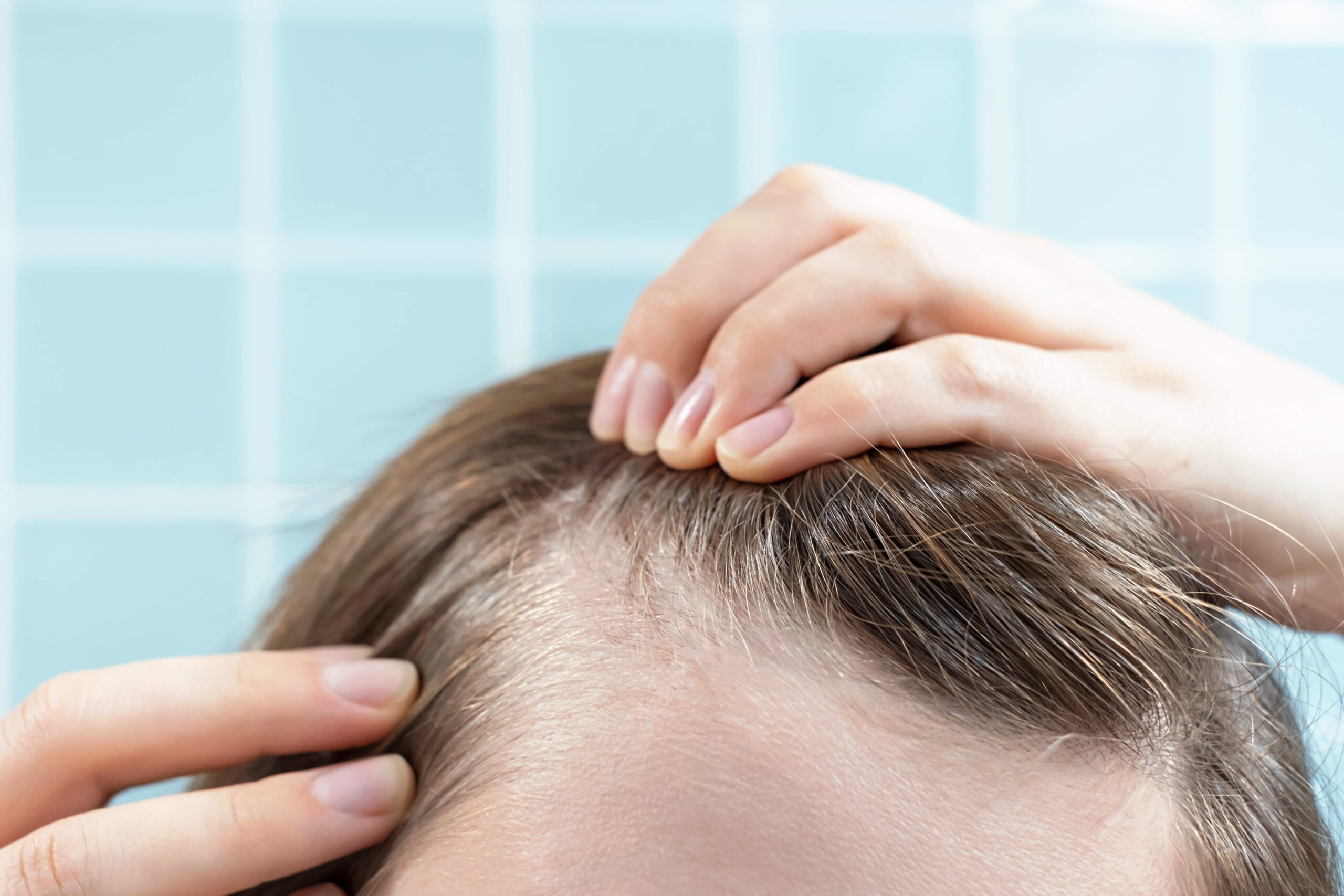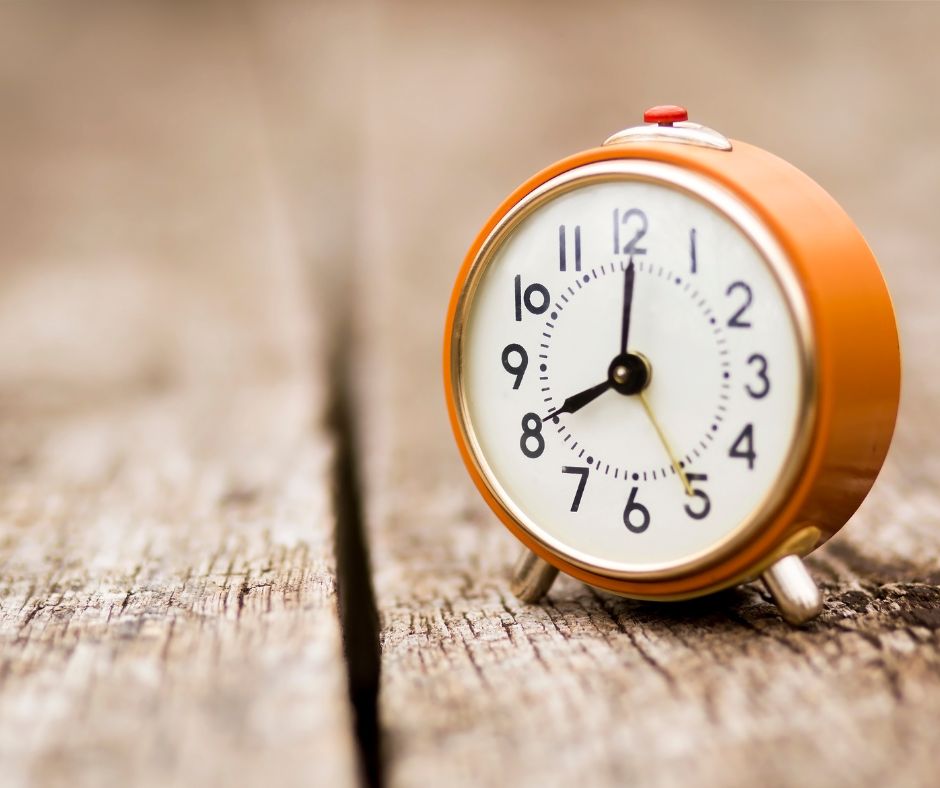Life is full of twists and turns; sometimes, our bodies undergo complex changes that can make us insecure. One of those scary changes is a receding hairline, which is a frightening path to go through for many women. It brings up feelings like frustration and self-doubt, affecting how we look and feel about ourselves. About one-third of women experience hair loss at some point in their lives.
Studies show that in postmenopausal women, this number increases to as many as two-thirds. Although receding hairlines are common in women, they are believed to affect men mainly. This causes more psychological stress in women due to societal pressure on hair and beauty. It is essential to know that if you are experiencing a receding hairline, you are not the only one.
In the following steps, we will dive into reasons for receding hairline in women and help you through the journey of dealing with a receding hairline. We get that it’s not just about your appearance; it’s about helping you bring out your best self. So, let’s dive into this together—exploring, understanding, and finding ways to fight this.
How Can You Tell When You Are Suffering From Receding Hairline?
Noticing that your hairline is receding can be difficult. Hair shedding is normal for women when it is not excessive.
Women with a receding hairline experience a slow, gradual process. If you make the mirror your ally, you can notice these changes quicker and proactively address the issues. If you see more hair falling out when you brush it or find hair on the floor, in the shower, or on your pillow, your hairline may be receding.
Pay close attention to any alterations in its natural contours. Women who reduce their hairline can experience a shift in the shape of their hair, perhaps forming an M-shape or a more pronounced widow’s peak. These are also some of the indicators that your hairline is receding.
Why is Your Hairline Receding?
Understanding the reasons behind a receding hairline is a different battle for each individual. In women, several factors contribute to this natural occurrence.

Any female can be affected by this problem. However, it is more common in:
- Women older than 40;
- Pregnant women or women who have recently had babies;
- Women who have had chemotherapy or have been affected by different medications;
- Women who often have tight hairstyles that pull on their hair (tight ponytails or braids);
- Menopausal women.
Receding hairline women often have genetic predispositions to experience hair loss, passing down certain traits that influence hair health. Genetics could play a part if your family tree has a history of hair thinning or receding hairlines.
Hormones, the tiny messengers in our bodies, can also influence our hair. Changes in hormonal levels, like those during pregnancy, menopause, or conditions like polycystic ovary syndrome (PCOS), might trigger a receding hairline.
Lifestyle choices matter, too. Receding women often have stress, poor nutrition, and hairstyles that pull on the hair, contributing to a receding hairline. Imagine your hair as a delicate flower; it needs the right environment to bloom.
Other causes include but are not limited to:
- Pregnancy, which disrupts your hormones and often causes hair loss;
- Low thyroid, which directly impacts hair development at the root;
- Excessive styling, including dying hair often and applying heat too often.
The good news is that understanding these causes is the first step towards solutions. Receding hairline women can confidently care for their hair by embracing their unique journey and making informed choices. Whether it’s genetics or life changes, you have the power to take care of your hair. Remember, you’re not alone, and your journey is as unique as you are.
What if I Notice that my Hairline is Changing?
First things first, talk to a professional. A skin doctor or healthcare expert can help determine why it’s happening—whether in your genes, hormones, or lifestyle. Understanding the “why” for receding hairline women is like finding the first piece of a puzzle.
Think about making small changes in your daily life to keep your hair healthy. Women with receding hairline need to eat good food, find ways to relax and treat their hair gently. These steps can help you notice a big difference. Your hair reflects how you take care of yourself.
Try out different hairstyles that make you feel good. There are many options, whether a cute bob or fun bangs. You can also add accessories like headbands to make your style even more unique.
Most importantly, be kind to yourself. With receding hairline, women often feel stressed, thinking it makes them lose value. Your value isn’t about how your hair looks. Surround yourself with supportive people; remember, you’re amazing just as you are.
Possible Treatments for a Receding Hairline
With the help of modern science and medicine, several treatments and methods can help you stop a receding hairline. The best method for receding hairline women can be determined by consulting a hair growth expert, who can help you choose the correct next steps. Remember – There is no one-size-fits-all treatment!
Some of the possible treatments and steps you can take to counter a receding hairline are:
- Minoxidil – Minoxidil is an over-the-counter product that combats hair loss in females. Minoxidil doesn’t require a prescription and can often be found in beauty stores and pharmacies. A study of the minoxidil treatment in receding hairline women found that 88% experienced reduced hair loss.
- You might be told to take vitamins and supplements if you lack certain nutrients, like vitamin D, biotin, protein, or iron. These nutrients help prevent hair thinning and loss.
- Changing your hair care routine – Your everyday products may damage your hair more than you know. Do your research and find the perfect products for you.
- Using hot tools like straighteners or curling irons can harm your hair. Limiting their use when your hair is vulnerable might be helpful.
- Stop stressing! Calm your mind and body, as stress harms your body and hair. Take some time for yourself. Exercise can be one of the ways that can help you remove stress and keep your body and your hair healthy.
Final Reflections: Your Journey, Your Beauty
Most importantly, stay strong! Remember, you are not alone in this journey. A receding hairline for women occurs often, and many options exist to help you.
Be kind to yourself and remember that many women are experiencing similar challenges, so share this article to educate and empower them with tips and tricks to help them through these experiences together.






